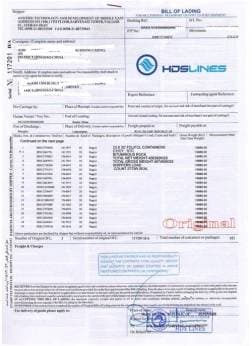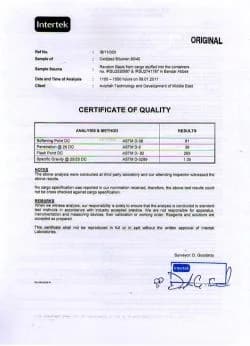PMB 25/55 – High-Performance Polymer Modified Bitumen for Extreme Durability
PMB 25/55 is a specially engineered Polymer Modified Bitumen designed for infrastructure projects where both flexibility and stiffness are essential. The “25/55” classification refers to its penetration range, which strikes the perfect balance between rutting resistance and fatigue performance. This grade is manufactured by modifying high-quality paving bitumen with elastomeric polymers, resulting in a binder that delivers superior adhesion, elasticity, and temperature stability compared to conventional grades.
Used extensively in high-traffic roads, bridge decks, and urban intersections, PMB 25/55 ensures longer service life, reduced maintenance costs, and outstanding performance in challenging climates.
Why PMB 25/55 is a Game-Changer for Road Construction
Unlike standard bitumen grades, PMB 25/55 incorporates a polymer network that transforms the binder’s performance profile. This modification enhances both low-temperature crack resistance and high-temperature rut resistance—two of the most critical factors in asphalt durability.
For global contractors and asphalt producers, this means one thing: roads that last longer and perform better under stress.
Key Advantages of PMB 25/55
Balanced Flexibility & Stiffness – With a mid-range penetration value, 25/55 offers strong rut resistance while maintaining elasticity.
Extended Pavement Life – Withstands heavy axle loads and frequent temperature fluctuations.
Improved Adhesion – Maintains strong bonding with aggregates even under moisture and traffic stress.
Excellent Elastic Recovery – Reduces permanent deformation after repeated traffic loading.
Versatile Performance – Suitable for both hot and cold climate regions.
Applications of PMB 25/55
1. Highways and Expressways
Designed for high-speed, high-volume traffic, 25/55 prevents rutting and surface cracking over years of service.
2. Airport Runways
Handles the extreme load and shear forces from aircraft during landing and take-off.
3. Urban Intersections and Bus Lanes
Ideal for stop-and-go traffic areas where deformation resistance is critical.
4. Bridge Decks and Flyovers
Maintains flexibility and adhesion under structural movement and extreme temperatures.
5. Industrial Zones and Ports
Performs in high-load environments such as cargo yards, container terminals, and heavy equipment areas.
Manufacturing Process of PMB 25/55 |Basekim
Producing PMB 25/55 requires precision, advanced mixing equipment, and strict quality control:
Base Bitumen Selection – High-grade paving bitumen chosen for viscosity and purity.
Polymer Addition – Styrene-Butadiene-Styrene (SBS) or other elastomers are blended for enhanced performance.
High-Shear Mixing – Ensures uniform dispersion of polymer within the bitumen matrix.
Temperature-Controlled Processing – Maintains optimal blending temperature to preserve polymer quality.
Performance Testing – Penetration, softening point, elastic recovery, and viscosity are tested before packaging.
Performance Benefits Compared to Conventional Bitumen
| Feature | Conventional Bitumen | PMB 25/55 |
|---|---|---|
| Rut Resistance | Medium | High |
| Elastic Recovery | Low | Excellent |
| Temperature Stability | Average | Superior |
| Crack Resistance | Moderate | High |
| Service Life | 8–12 years | 12–18 years |
Packaging & Delivery Options
PMB 25/55 is supplied globally in:
Bulk Tankers – Ideal for large-scale asphalt plant supply.
New Steel Drums – 180–200 kg net weight for export shipments.
IBC Containers – Suitable for specialized or high-value orders.
With Basekim’s global logistics network, 25/55 is shipped under FOB, CIF, or EXW terms, supported by MSDS, quality certificates, and compliance documentation.
Environmental & Sustainability Impact
Using PMB 25/55 reduces the frequency of resurfacing projects, lowering resource consumption over time. Its long-lasting performance means fewer disruptions, less energy used in reconstruction, and a smaller carbon footprint over the road’s lifecycle.
Frequently Asked Questions (FAQ)
Q1: Can Oxidized Bitumen replace PMB 25/55 in highway projects?
A: No. Oxidized Bitumen is less flexible and may crack under traffic stress, whereas 25/55 offers superior elasticity.
Q2: Is PMB 25/55 better than Oxidized Bitumen for airports?
A: Yes. PMB 25/55 provides higher rut resistance and elastic recovery, making it ideal for high-load surfaces like runways.
Q3: Can 25/55 be mixed with Oxidized Bitumen?
A: Mixing is not recommended as it can compromise polymer performance.
Q4: Which has a longer service life, 25/55 or Oxidized Bitumen?
A: PMB generally offers a longer lifespan under heavy traffic and extreme climates.


